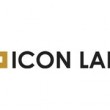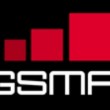

To remain relevant and competitive businesses must embrace the Internet of Things (IoT). However, a significant collateral challenge faced in doing so is managing the torrent of data these “Things” produce. (more…)
March 28, 2017
Posted by: Avadhoot Patil

Icon Labs, a provider of security solutions for IoT and edge devices, has announced the availability of the Floodgate Certificate Authority (CA). (more…)
March 22, 2017
Posted by: Avadhoot Patil

Smart home systems must be secure by design across products and services and the entire supply chain if the industry is to deliver on its promises and meet ambitious market growth predictions, says a report published by Beecham Research. (more…)
February 6, 2017
Posted by: Avadhoot Patil

Device Authority, a global provider of policy and device-driven security automation for the Internet of Things (IoT), has appointed Rao Cherukuri as chief product officer (CPO). (more…)
January 26, 2017
Posted by: Avadhoot Patil

It was 1984, and I was off to the only movie theatre in the town where I lived. The movie was called Terminator and although it was science fiction, the story line had an eerie ring of truth. It was about intelligent computers rising and rebelling against its human progenitors. (more…)
January 11, 2017
Posted by: Avadhoot Patil

The GSMA, with partners SIMalliance and ESMIG, have published a new report written by analyst house Beecham Research highlighting the importance of the GSMA Embedded SIM Specification and eUICC to the future of the utilities sector. (more…)
November 21, 2016
Posted by: Avadhoot Patil

High price tags continue to put smart homes beyond the reach of most home owners and many who can afford to pay are not been sold on the benefits, according to a report from Beecham Research released today. (more…)
October 7, 2016
Posted by: Avadhoot Patil

The Internet of Things (IoT) revolution is gearing up to dramatically alter various industrial sectors of the economy including manufacturing, healthcare, energy and transportation amongst others, which together account for nearly two-thirds of the global GDP, writes Sukamal Banerjee, the executive vice president of engineering and R&D services at HCL Technologies. (more…)
June 22, 2016
Posted by: George Malim

As IoT becomes increasingly pervasive, a new and alternative services sector is evolving, called servitization – also known as outcome-based services, writes Joe Kenny, the senior director for Global Customer Transformation at field service management specialist, ServiceMax.
By integrating services with products, you can create bundles that are of greater value than products alone. As manufacturers move from being purely product providers to becoming service providers as well, it adds value to their products and generates additional revenue. In other words, service-based outcomes take you out of competing on price alone.
According to Ashton Business School, servitization delivers a 5-10% jump in annual services revenue, profits two to three times greater than those on product sales alone, cost reductions for customers as high as 30%, as well as the opportunity to increase service revenues even further by supporting existing third party or competitive products. This creates an ongoing relationship with the customer that effectively locks out competitors.
Machines are already able to self-diagnose themselves, and report back when they need servicing or require action to be taken to avoid breaking down. This is a game changer for any company with a service department, as well as the wider field service management industry. But shifting business models requires thought and planning. So let’s look at some of the key considerations on the business transformation journey to servitization.
First, validate your business model. Chances are you’ll be making potentially more money but in different ways which will require a rethink. Machines, products and consumers are now all able to communicate with each other in real time, which opens up a myriad of possibilities for monetising revenue in different ways.
Think through the customer experience, and look to add value or provide value in the ecosystem either upstream, downstream or both. By building a better customer experience that’s of value or creating more viability of an asset’s use, you’ll not only be able to unlock new value for your customer, but also potentially profit from it. Be careful not to create vulnerabilities or unnecessary technical baggage to a customer transaction or service. Opt for simple logical value. In my view, simple, reliable and consistent wins over cool every time so don’t over complicate things.
Second, look at security around how the data is collected, protected using encryption, stored and communicated. A good reference is The IoT Security Foundation, which is vendor neutral, non-profit and full of expert resources for knowledge sharing, best practice and advice.
Third, take a look at who owns the data captured and the consolidated trends. We now have laws that cover control data captured, data protection, ownership and the protection of personal information. Talk to your legal department and review these aspects, and include them in your end user agreements – clearly state what data is collected and how relates to protection and usage rules.
Fourth, ensure you understand the technology you are using. Have you designed for quality of reporting, and for failure, scalability, reliability? How will you know the sensors are reporting back with valid measurements? It’s really important to test, test and test again – everything from sensor locations, fixings, power supply, communication methods and circuit redundancy.
Fifth, check Industry 4.0 for ideas. In other words, check for standards and emerging templates or blueprints. You can be creative but it’s worth doing your research to get plenty of advice. Always build trial or proof of concept on small scale then methodically learn what business outcomes you can drive or improve – but keep a holistic focus on improving value. And consider how are you going to install, maintain, upgrade, retrofit, or decommission your solution, and once deployed, make sure you recalibrate your expectations on a continual basis.
There are a few obstacles to overcome, but the reality is we have been monitoring sensors in machines for years. As an industry, we already know what good, reliable data looks like and most companies are familiar with the thresholds of proper testing and validation.
The convergence of IoT and servitization is transforming business models in the service arena, opening new possibilities for proactive maintenance, prescriptive management and recall management. Your only decision is how to transform your business to take advantage of them.
May 19, 2016
Posted by: George Malim

The Internet of Things (IoT) has continued to snowball over the past couple of years, and it’s the buzzword that continues to dominate the tech world. It was alarming just how big a focus it was at Mobile World Congress this year, writes Robin Kent, the director of European operations at Adax. (more…)
April 21, 2016
Posted by: George Malim